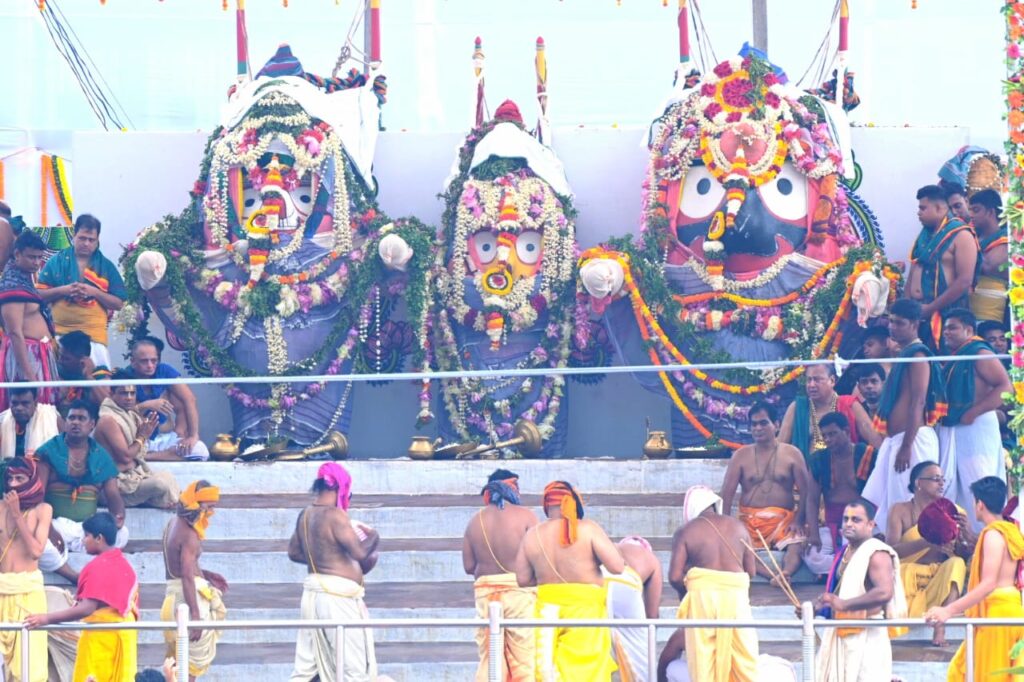On the auspicious day of Snana Purnima, the temple city of Puri in Odisha, India, comes alive with vibrant festivities and deep spiritual significance. This annual ritual, marking the full moon day of the Hindu month of Jyeshtha, sees the deities of Lord Jagannath, along with his siblings Balabhadra and Subhadra, undergo a ceremonial bath, drawing thousands of devotees from across the globe.The rituals commence early in the morning at the Jagannath Temple, one of Hinduism’s holiest shrines. The day is dedicated to purifying and rejuvenating the deities through a grand bathing ceremony, believed to have been performed since the temple’s inception in the 12th century. According to tradition, 108 pitchers of sanctified water, drawn from the northern well of the temple, are used in the bathing ritual, known as ‘Jalabhisheka’.The deities are brought out from the inner sanctum and placed on the Snana Bedi, a specially constructed platform in the temple premises, accessible to the public eye. This is a rare occasion when non-Hindus and those not permitted inside the sanctum can glimpse the deities. The priests and servitors of the temple perform elaborate rites and chant Vedic hymns as they bathe the deities, an act considered highly auspicious and believed to wash away the sins of the devotees who witness it.
The Snana Purnima ritual is not merely a visual spectacle but a deeply symbolic act. The ceremonial bath is said to mimic the natural human need for purification and refreshment. Following the bath, the deities are adorned in the ‘Gajanana Vesha’ (elephant attire), reminiscent of Lord Ganesha, symbolizing wisdom and the removal of obstacles.Post the bathing ceremony, the deities are believed to fall ill, a concept known as ‘Anasara’. They retreat into seclusion for a fortnight, during which time they are not available for public worship. This period is akin to convalescence, where the deities are offered specific herbal medicines and fruits to aid their recovery. The temple kitchen, or ‘Anasara Gruha’, plays a crucial role during this time, preparing special ‘Pana’ drinks and other restorative offerings.During the Anasara period, the deities’ absence creates a sense of longing among devotees, which culminates in the Rath Yatra, the grand chariot festival that follows their recovery. The Rath Yatra, where the deities travel to their garden palace, the Gundicha Temple, in elaborately decorated chariots, is one of the most anticipated events in the Jagannath calendar.The Snana Purnima festival underscores the human-like qualities attributed to the deities, fostering a unique bond between the divine and the devotees. It exemplifies the rich tapestry of rituals and traditions that define the cultural and spiritual ethos of Puri.As the deities undergo their divine bath, the atmosphere in Puri is charged with devotion and joy, reaffirming the faith and cultural heritage that has been meticulously preserved through centuries. This annual observance not only attracts pilgrims from far and wide but also serves as a powerful reminder of the enduring legacy of Lord Jagannath and the timeless rituals that continue to inspire and unite the faithful.

